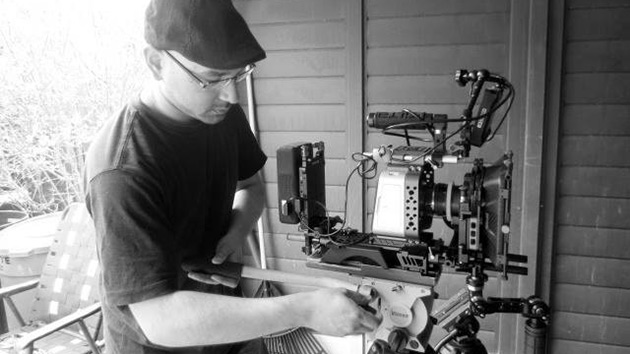Picture Quality Just Improved, Bringing ProRes Workflow Closer to Raw Quality
A long anticipated feature of the Blackmagic Cinema Camera (BMCC) firmware upgrade released this week was a refinement to the camera's debayering process that promised "sharper and cleaner" output. The new image-processing algorithms have been borrowed from advancements made in DaVinci Resolve, Blackmagic's advanced color-correction tool, to give shooters more accurate images straight out of the camera.
The new firmware came out in tandem with the release of a public beta of DaVinci Resolve 11, with its slew of new editing features including a more robust round-trip workflow for Final Cut Pro X.
We were curious whether filmmakers would find the updated debayering to have a significant impact on picture quality, so we spoke to New York-based filmmaker Paul Del Vecchio about his experience beta-testing the camera as cinematographer on an independent film, Trent & Isabella, shot on Long Island.
Del Vecchio shot the film with two BMCCs, including a micro four-thirds (MFT) version of the camera with a Metabones Leica R Lens Speed Booster mounted to help achieve what he calls a "Super 35 look" with Leica glass. An EF-mount BMCC was used as a B camera. Del Vecchio updated the cameras' firmware during the shoot, eager to take advantage of any possible improvement in the ProRes 422 (HQ) recordings. "We didn't have the manpower or the budget for a raw workflow, even at 2.5K, so we really wanted to get a sharper image," he told StudioDaily. "Part of the film is influenced by spaghetti westerns, specifically Sergio Leone movies, so we wanted to get as much detail as we could."
Did the camera's ProRes output improve post-update? "To me, it's really noticeable," Del Vecchio said. "I did comparisons between raw footage and the old debayer, and it was kind of shocking because the ProRes was so much softer than the raw. But with the new debayer, it's really close."
Del Vecchio is careful to point out that there are different kinds of sharpness, not all of them good. That's one of the reasons he's picky about lenses and gravitates toward Leica. "The Leica lenses resolve a lot of detail but still have a softness to them that I love," he explains. "It has a quality that's not as harsh on the skin tones. You see a lot of detail, but it's not an edgy kind of sharpness. Some lenses seem like they're too sharp, and they do something to the skin that I'm not really a fan of, bringing out wrinkles and things like that. The Leicas have a smoothing quality, but they still hold a ton of detail."
Before picking up the BMCC, Del Vecchio had shot mainly with DSLRs and other compact 8-bit cameras like the Canon C100 and the Sony FS100. The BMCC was a revelation because the 10-bit footage held up better in post-production, without giving way quickly to banding or blocky digital artifacts in color-correction. That was important for Trent & Isabella, which targets a number of specific looks.
"We had some scenes we were shooting in a smaller garage set where it was more of a crime genre or film noir feel," he said. "And another scene is in a basement where a girl is being held captive, and the lighting there is in a horror or thriller style. And then we did a scene out on the beach in the sand, and if you try to shoot that on a DSLR in bright sunlight, sometimes you'll just blow out the sky. But the BMCC was able to shoot in every one of those scenarios and not blow out the detail. It's not a super-low-light camera, but with 13 stops it's amazing the amount of latitude you have."
For more on Trent & Isabella, including info on his lighting and exposure settings, see Del Vecchio's post about the film at Blackmagic's cinematography forum.
Crafts: Shooting
Sections: Creativity
Topics: Project/Case study blackmagic design bmcc debayer paul del vecchio ProRes
Did you enjoy this article? Sign up to receive the StudioDaily Fix eletter containing the latest stories, including news, videos, interviews, reviews and more.














Leave a Reply